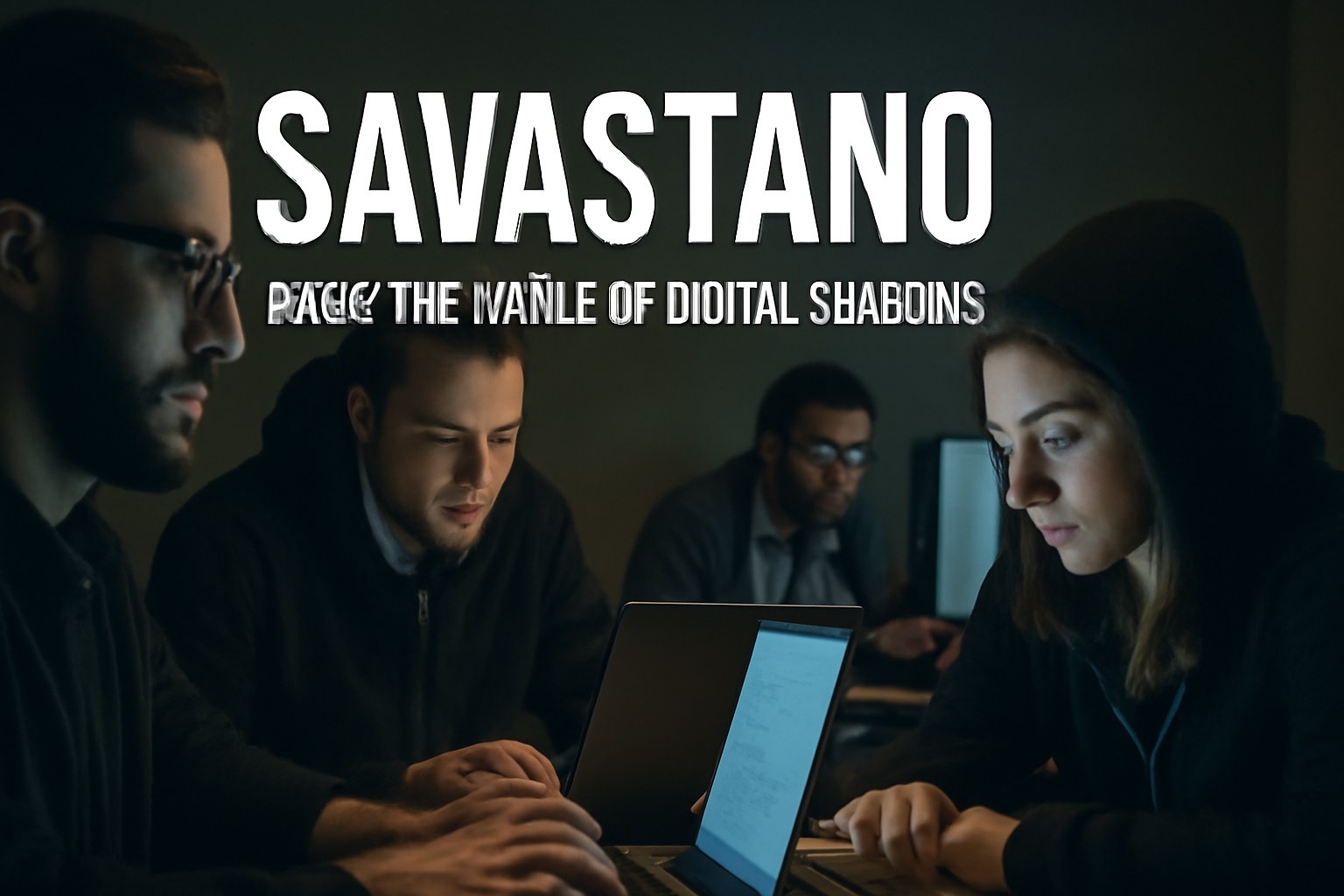In the vast digital world, where most of us browse safely, there’s an underbelly teeming with secrecy, deception, and danger. One name whispered across forums and cybersecurity briefings is “Savastan0.” It isn’t just a nickname or a random handle. It represents a movement—an identity deeply embedded in the realm of cybercrime.
Savastan0 has become symbolic of a new wave of digital wrongdoers who are not just hackers in hoodies, but calculated professionals running sophisticated online operations. This article uncovers what Savastan0 represents, how it operates, and why it’s crucial for you to understand the darker layers of the web.
Let’s dive into the mysterious and alarming world behind the screen.
Who or What Is Savastan0?
Savastan0 isn’t just an individual—it’s a persona or possibly even a team operating on various underground platforms. They’re best known for dealing with sensitive stolen information, specifically in the realm of “Dumps” and “Fullz.”
“Dumps” refer to stolen credit card data, often harvested from point-of-sale terminals or data breaches. “Fullz” is short for “full information”—a cybercriminal term for a complete identity profile including name, address, date of birth, Social Security number, and more.
The Rise of Cybercrime Marketplaces
The digital world is evolving—and so are its criminals. Savastan0 is part of a bigger picture where online marketplaces for stolen data have become the new normal in the cybercriminal ecosystem.
These platforms often mimic the look and feel of e-commerce websites. However, instead of electronics or books, the goods on display are hacked credit cards, personal identities, login credentials, and more.
Savastan0 has made a name by offering such data in an organized and “professional” way—bringing a terrifying sense of normalcy to online crime.
How Does Savastan0 Operate?
While the precise details of their operation are hidden deep in the layers of the dark web, here’s how platforms like Savastan0 typically function:
They list stolen data with detailed tags (e.g., card type, bank, zip code).
Offer filters so buyers can select data relevant to a specific geographic region or card type.
Use cryptocurrency like Bitcoin or Monero to mask transaction trails.
Deploy escrow services to “protect” both buyers and sellers.
This kind of structured criminal commerce is a big reason law enforcement finds it hard to dismantle such platforms.
Savastan0 and the Dark Web
The dark web is the ideal playground for operations like Savastan0. Hidden behind encryption layers and accessible only through special browsers like Tor, the dark web shelters anonymity.
Here, marketplaces like Savastan0 thrive away from the prying eyes of law enforcement and regular internet users. They use encrypted chats, VPNs, and other stealth tools to stay under the radar.
Even the website domains for such operations are often rotated or changed frequently to avoid detection and blacklisting.
The Language of Crime: What Are Dumps and Fullz?
To the uninitiated, “Dumps” and “Fullz” might sound like tech jargon, but they’re crucial to understanding how Savastan0 functions.
Dumps: Typically the raw data from the magnetic stripe of a credit card. This can be used to clone cards or make unauthorized purchases.
Fullz: A complete identity kit, often used for opening bank accounts, securing loans, or committing tax fraud.
Savastan0’s market is known for bundling these two data types—offering potent tools for criminals with malicious intent.
The Buyer’s World: Who Shops at Savastan0?
It’s not just high-level hackers or tech wizards buying from platforms like Savastan0. Many buyers are average individuals who use the data for quick financial gain, identity fraud, or illegal reselling.
These marketplaces often have user-friendly interfaces, guides, and support systems—making it accessible for even beginners to enter the world of cybercrime.
Forums often accompany these platforms where users share “success” stories, technical support, and tutorials. The normalization of such discussions is alarming in itself.
Why It’s Difficult to Shut It Down
Despite growing awareness and legal efforts, platforms like Savastan0 persist for several reasons:
Anonymity tools make tracking identities difficult.
Servers are often hosted in jurisdictions with weak cybercrime laws.
Crypto payments leave little to no trail.
Community-driven backups often restore websites even after takedowns.
Law enforcement agencies have scored victories in the past—taking down large markets like Silk Road or AlphaBay—but the nature of the internet allows new platforms to rise in their place.
Impact on Victims
The human toll of platforms like Savastan0 is often forgotten. Every data set sold represents a real person—someone who may:
Face financial loss
Suffer identity theft
Struggle to reclaim their credit
Become entangled in fraudulent legal activity
Even worse, victims may not know their information is out there until it’s too late. The emotional and mental distress caused by such crimes is long-lasting.
Digital Vigilance: How to Protect Yourself
As cybercrime evolves, so should our defenses. Here’s how you can shield yourself:
Use two-factor authentication (2FA) for all online accounts.
Regularly monitor credit reports and bank statements.
Avoid public Wi-Fi for sensitive transactions.
Use secure, unique passwords for each platform.
Be cautious with email links and downloads.
While it’s impossible to guarantee 100% security, these steps significantly reduce the risk of falling victim to data theft.
Savastan0’s Role in the Future of Cybercrime
What makes Savastan0 particularly troubling is the level of professionalism and structure they bring to illegal trade. This isn’t just random hacking—it’s an organized, business-like operation.
As long as there is demand for stolen data and tools that support anonymity, platforms like Savastan0 will continue to rise. It’s a cat-and-mouse game between criminals and cyber defense teams.
Moreover, as artificial intelligence, machine learning, and digital identities evolve, cybercriminals are expected to become even more advanced in their attacks.
Law Enforcement vs. Savastan0: A Losing Battle?
Global law enforcement agencies like Interpol, Europol, and the FBI are investing heavily in cybercrime divisions. Still, the pace at which operations like Savastan0 adapt is alarming.
To catch a platform like Savastan0, authorities must collaborate across borders, overcome legal complexities, and often operate in gray zones themselves—posing ethical and legal dilemmas.
The Psychological Appeal of Digital Crime
Why do individuals engage with operations like Savastan0? Beyond the money, the reasons include:
A sense of power and control
A challenge or intellectual thrill
Detachment from real-world consequences
Peer recognition within the hacker community
Understanding this mindset is crucial in creating strategies to deter such behaviors early—especially among the youth.
Conclusion
Savastan0 is more than just a dark web seller—it represents a broader shift in how cybercrime is being commodified and scaled. As our digital footprints grow, so does the market for stolen data.
Understanding platforms like Savastan0 isn’t just for tech experts or law enforcement. Every internet user should know how these operations work, how to protect themselves, and what’s at stake.
While the shadows of the internet may always exist, education and awareness are our most powerful lights.
FAQs About Savastan0
What is Savastan0?
Savastan0 is a dark web marketplace known for selling stolen credit card data and full identity profiles (Fullz).
Is Savastan0 a person or a group?
It’s unclear, but it likely represents a group or collective rather than a single individual.
What are Dumps and Fullz?
Dumps are raw credit card data; Fullz are complete identity profiles used for fraud.
Is buying from Savastan0 illegal?
Yes, accessing or purchasing from such platforms is illegal and punishable by law.
How can I protect my data from platforms like Savastan0?
Use strong passwords, enable two-factor authentication, and monitor your financial activity regularly.
Can Savastan0 be taken down permanently?
It’s difficult due to encrypted networks and legal loopholes, but law enforcement continues to try.

